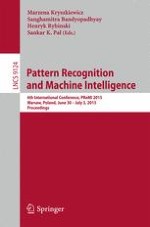2015 | OriginalPaper | Buchkapitel
Consensus-Based Prediction of RNA and DNA Binding Residues from Protein Sequences
verfasst von : Jing Yan, Lukasz Kurgan
Erschienen in: Pattern Recognition and Machine Intelligence
Aktivieren Sie unsere intelligente Suche, um passende Fachinhalte oder Patente zu finden.
Wählen Sie Textabschnitte aus um mit Künstlicher Intelligenz passenden Patente zu finden. powered by
Markieren Sie Textabschnitte, um KI-gestützt weitere passende Inhalte zu finden. powered by
